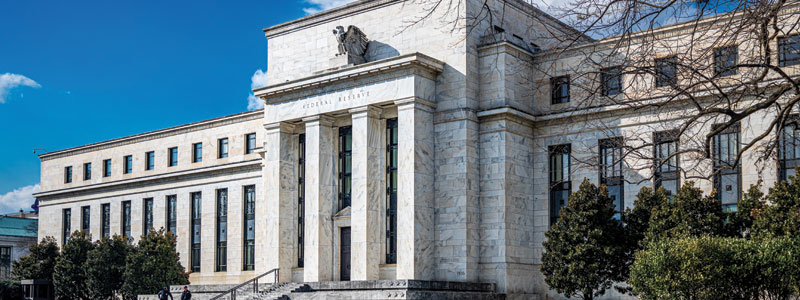
The European Central Bank (ECB) and the Federal Reserve (FED) of the United States are two of the most influential financial institutions in the world, responsible for formulating and implementing monetary policies in their respective territories.
Their decisions have a significant impact on the global economy, investment and financial conditions. Let us therefore examine together the strategies and perspectives of these two central banks.
1. FED: the world's most important bank
The Federal Reserve, or the world’s most important central bank, governs the U.S. dollar, the world’s reserve currency.
The FED’s primary goal is to maximize employment and stabilize prices. It meets eight times a year to analyze general economic trends and set interest rates.
The Federal Reserve, through its various monetary policy instruments, influences the demand and supply of liquidity within the economic system. Interest rate decisions, in particular, have a significant effect on the U.S. dollar. For this reason, special attention should be paid to the dates on which meetings take place and, above all, know what the market expectations are.
It is very important to know whether the FED intends to adopt:
- A dovish (dove) stance i.e., an expansionary monetary policy, favoring maintaining a low level of interest rates in order to stimulate an economic recovery;
- A hawkish (hawkish) stance, that is, a restrictive monetary policy aimed at raising interest rates in order to cool the economy and reduce any inflationary pressures.
2. ECB: what functions does it perform?
The ECB (the European Central Bank) is the central bank of the European Union countries that use the euro as their currency. These countries make up the Eurozone, one of the largest economic regions in the world.
The ECB’sprimary goal is to maintain price stability (i.e., keep inflation below 2 percent annually).
The main functions of the ECB are to:
- Define and implement the European Union’s monetary policy;
- Hold and manage the official reserves of member states;
- Operating in the foreign exchange market;
- Promote the smooth operation of payment systems.
The ECB meets every six weeks (on Thursdays) and each meeting is followed by a press conference.
For investors working in financial markets (particularly currency markets), it is important to know when the ECB meeting is scheduled because it is common for there to be a marked increase in volatility on those dates.
3. The tools available to central banks
The term “monetary policy” refers to the decisions that central banks make in order to achieve sustainable economic growth and keep the level of inflation under control.
- When central banks want to support economic growth, they increase the amount of money available, stimulating consumption and investment (this is called “monetary expansion” or “dovish” attitude);
- When central banks want to cool economic growth (often to lower the level of inflation) they reduce the amount of money available (this is referred to as “monetary tightening or a “hawkish” attitude).
There are basically two tools that central banks use to increase or decrease the amount of money within the economic system:
- Interest rates, through which central banks regulate the cost of borrowing by citizens and businesses;
- Quantitative easing and Quantitative tightening. Through Quantitative easing, the central bank buys government bonds from major banks. Increased demand for government bonds causes bond prices to rise and yields to fall. By reducing yields, companies and states can issue bonds at a lower rate, thus reducing their interest cost. Quantitative tightening, on the other hand, is the opposite operation.
4. FED and ECB: outlook for 2024
Lagarde (ECB President), will probably cut 25 basis points in June and burn Powell (FED President) on the spot. A dynamic dictated by the resistance of U.S. inflation. Indeed, in the current environment, the repricing of monetary policy expectations regarding the FED and, as its natural consequence, the rise in bond rates has inevitably continued.
In fact, while at the end of 2023 futures (a standardized derivative contract by which two parties commit to exchange a financial or real asset at a predetermined future date and price) assumed a first rate cut as early as March, these expectations have seen a gradual reduction and the downward cycle has been both shifted further and further ahead in time and reduced in magnitude: now the market expects the first cut in September and the overall reduction appreciated by the end of 2025 is 150 basis points, from 5.5 percent to 4 percent.
On the other hand, expectations are more stable for the ECB, which faces inflation that is only 2.4 percent lower on an annual basis but also weaker growth (estimates for 2024 are stabilizing at 0.5 percent): a 25 basis point easing at the June 6 meeting and similar moves in the following months until the deposit rate is raised to 2.5 percent at the end of 2025 appears concrete.






